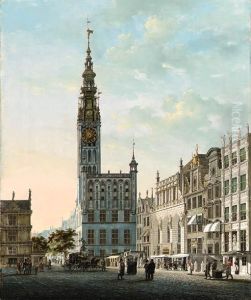Michael Christoph Gregorovius Paintings
Michael Christoph Gregorovius, not widely known in the common lexicon of artists or historians, might be confused with Ferdinand Gregorovius, a renowned German historian and writer who lived during the 19th century. Ferdinand Gregorovius was born on January 19, 1821, in Neidenburg, Prussia (now Nidzica, Poland), and he died on May 1, 1891, in Munich, Germany. His work primarily focused on the history of Rome in the Middle Ages, and through his detailed accounts and narrative style, he became one of the most celebrated historians of his time.
Ferdinand Gregorovius's magnum opus is 'Geschichte der Stadt Rom im Mittelalter' (History of the City of Rome in the Middle Ages), a seminal work that covers the period from the 5th to the 16th century. This eight-volume series, published between 1859 and 1872, is a testament to his meticulous research and profound understanding of historical contexts. Gregorovius's interest in Italy and its history was sparked by his travels throughout the Italian peninsula, starting in 1852. His writings not only reflect a deep scholarly engagement with the past but also a vivid portrayal of the landscapes, architecture, and the people he encountered during his travels.
Aside from his historical works, Gregorovius also wrote poems, essays, and travelogues, reflecting his diverse interests and literary talent. He was a correspondent for several German newspapers, through which he shared insights into Italian culture, art, and politics with the German-speaking world. His contributions were recognized with memberships in various academies and honors, including the Order of the Crown of Italy.
Despite the initial confusion with Michael Christoph Gregorovius, it's clear that Ferdinand Gregorovius's legacy as a historian and writer has had a lasting impact on the study of medieval Rome and the broader field of historical scholarship. His works continue to be of interest to historians, scholars, and anyone fascinated by the rich tapestry of Rome's history.
